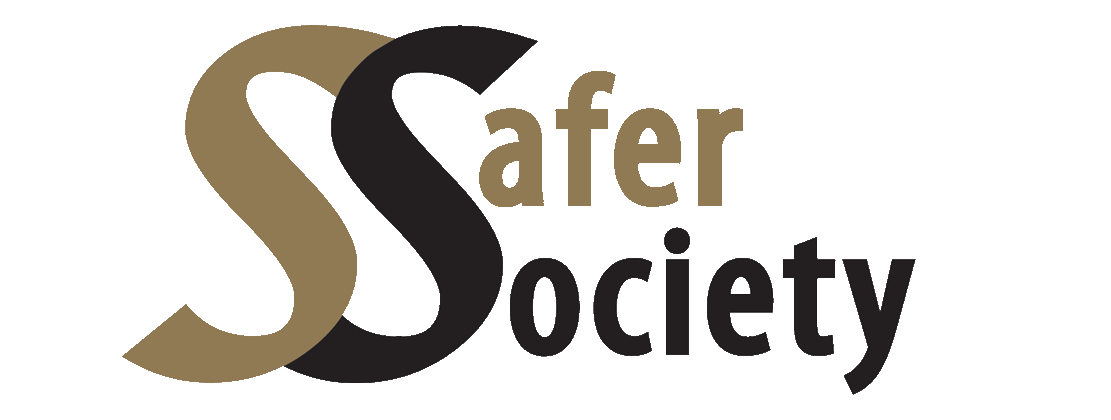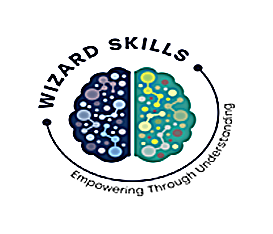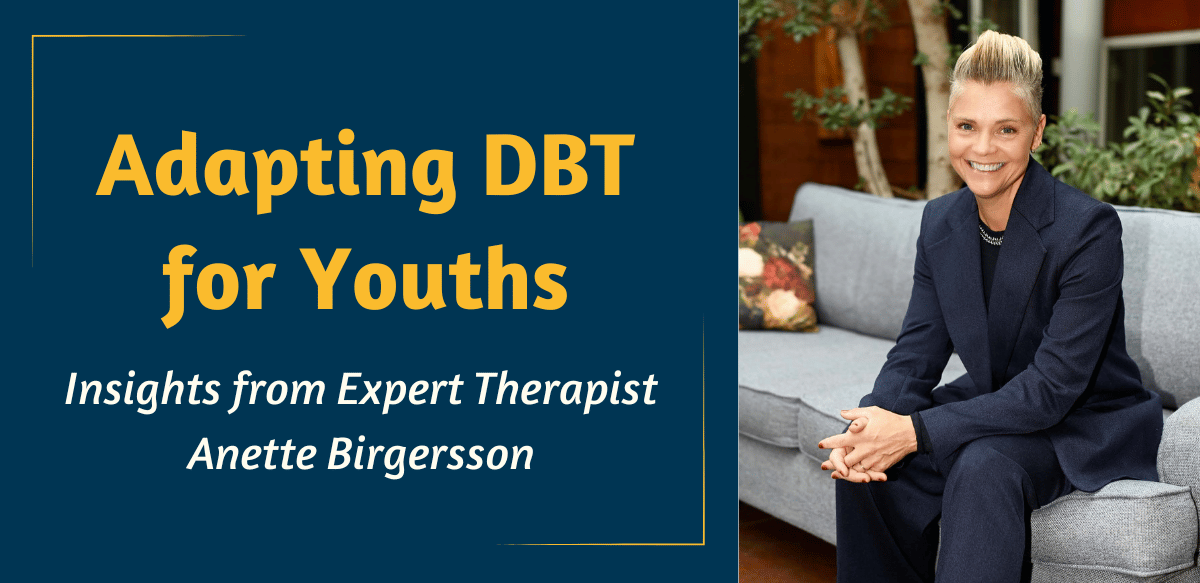
The urgent need for new approaches to treatment for youths who have sexually harmed was made very clear in research by Gewirtz-Meydan & Finkelhor (2020), where they found that, “…as many as 70-77% of the sexual assault and sexual abuse experienced by children and teens were committed by other children or teens.”

Dialectical Behavior Therapy (DBT) is a versatile and effective therapeutic approach for addressing various mental health challenges. Anette Birgersson, a licensed psychotherapist with over 25 years of experience working with children and teens, has provided valuable insights into applying DBT for younger populations. During recent trainings with Safer Society, she discussed strategies for adapting DBT principles to the developmental stages of children and adolescents and addressed the issue of sexually harmful behaviors, demonstrating how DBT techniques can effectively mitigate these complex behavioral challenges.
Using DBT for Challenging Behaviors
DBT is particularly effective for addressing challenging behaviors in children, including those with a history of sexually harmful behaviors or intense emotional dysregulation. In her trainings, Birgersson focuses on practical strategies for applying DBT principles to manage and reduce these behaviors:
- Stress Tolerance Skills: Teaching children to be aware and understand themselves to be able to manage overwhelming emotions, such as anger or anxiety, without resorting to harmful behaviors. Exploring a wide range of distraction techniques, from mindfulness exercises to physical activities, to cope with and create a “safety net” for your clients.
- Emotion Regulation: Equipping children with the tools they need to identify and manage their emotions before they escalate into problematic behaviors. By using the Wizard, Reptile, and Robot Brain framework, children can gain a deeper understanding of their emotional responses and develop healthier coping mechanisms.
- Relationship Skills: Helping children build and maintain positive relationships by teaching them concrete skills for effective communication and boundary-setting. These skills are important for reducing social isolation and fostering pro-social behavior.
- Real-World Application: Discovering how to integrate DBT skills into everyday situations, making the practice of these skills more relevant and effective. This approach ensures that children can apply what they learn in therapy to their daily lives, leading to lasting behavioral change through agency and empowerment.
Terminology or Core Concepts
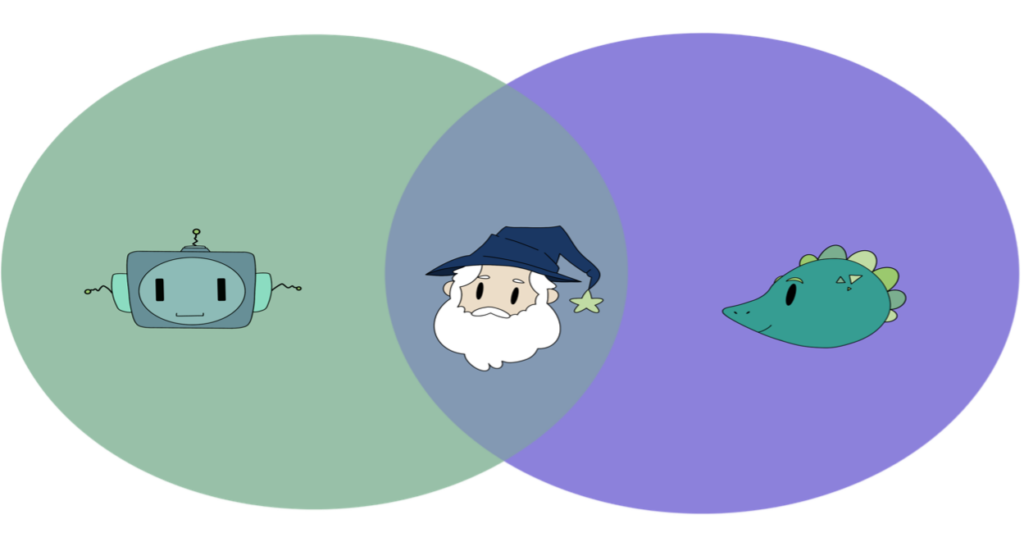
Wise mind – The Wizard, Emotional Brain – Reptile, and Reasonable Mind – Robot Brain
In DBT, understanding the different “states of mind” is essential for decision-making and emotional regulation. Anette Birgersson has simplified these concepts for children:
- Reptile Brain (Emotional Mind): The survival-driven part of the brain that reacts impulsively based on emotions. It’s the fight, flight, or freeze response that can sometimes overpower rational thinking.
- Robot Brain (Reasonable Mind): The logical and analytical side of the brain that focuses on facts and dismisses emotions. While practical, it can sometimes ignore the emotional needs of oneself and others.
- Wizard Brain (Wise Mind): The integration of both the Reptile and Robot brains. This is the part of the brain where emotions and logic come together to make smart, balanced decisions.
These terms make complex psychological concepts accessible to children, allowing them to better understand their thoughts and behaviors. She refers to the emotional mind as the “reptile brain,” the reasonable mind as the “robot brain,” and the wise mind as the “wizard brain.”
“We call reasonable mind the robot and the emotional mind the reptile brain because we always talk a lot about the survival system. And then wise mind is the wizard brain, our smart brain, our pre-cortex, where all this comes together, and we make smart decisions.”
Another change in terminology Birgersson recommends is the use of “relationship skills” instead of “interpersonal effectiveness.” This change makes the concept more straightforward and directly applicable to clients’ everyday experiences. The relationship Skills are part of the “Wizard Skills Program” that Birgersson has developed together with Christin Santiago.
The Flower of Emotions: A Visual Aid for Emotional Awareness
Birgersson has developed a compelling visual aid for her younger clients (teens like it too, in secret) known as the “emotional flower,” which serves as a collaborative tool for therapists and clients to explore and articulate emotional experiences. This interactive diagram allows clients to explore their feelings, what triggers them, the thoughts that accompany them, and the impulses they may lead to. By mapping these elements, the emotion flower enhances self-awareness and provides a foundation for effective emotional regulation strategies. If you work with Harmful Sexual Behaviors, you can also use the flower to explore “the Tingle” for young children or sexual arousal for teenagers.
This creative adaptation exemplifies how therapeutic techniques can be tailored to engage younger populations, making abstract psychological concepts more accessible and relatable.
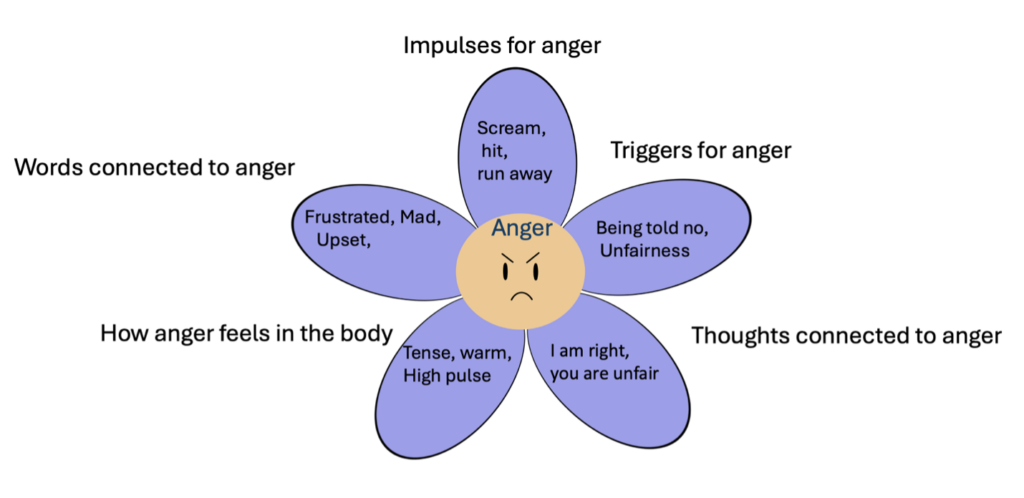
This interactive tool enables children and adolescent to explore:
- The Face: What the facial expression of the emotion looks like.
- Feelings: Recognize and name their emotions connected to how they feel.
- Triggers: Identify what causes these feelings.
- Thoughts: Understand the thoughts that accompany these emotions.
- Impulses: Recognize the urges that follow these emotions.
The Flower of Emotions serves as a collaborative tool between therapists and clients, enhancing understanding and awareness and creating agency of emotional regulation. This approach makes abstract psychological concepts more tangible and easier for younger populations to understand.
These include:
- Incorporation of Creative Activities: Music, dance, and physical activities encourage mindfulness practice and emotional regulation, making therapy more engaging for younger clients.
- Real-World Application of DBT Skills: Practicing and coaching DBT skills in everyday situations, rather than confining this practice to formal therapy sessions, particularly in residential settings, is a priority. This approach promotes awareness, agency, greater skill retention and integration into daily life. This also helps residential staff and caregivers to change their approach from reactive to proactive. By practicing the skills themselves and to focus on being proactive they can help children and teens in their prosocial development.
- Utilization of Multimedia Resources: Employ various multimedia tools, including YouTube videos and apps such as Safe Space, to explain DBT concepts and provide tools for skill practice.
If you would like make use of the “Flowers of Emotions” visual aid developed by Anette Birgersson, click here to download a PDF file that you can print out.
Additional Adaptations to DBT for Youths Engaged in Sexually Harmful Behaviors
In standard DBT, the term “life-threatening behaviors” refers to acts such as suicidal ideation and self-harm. Birgersson considers sexually harmful behaviors or other challenging potential harmful behaviors to be equivalent to this, in that while sexually harmful behaviors and challenging behaviors are not necessarily physically life-threatening, the consequences of those behaviors are severe. Addressing these behaviors is the priority in the first phase of DBT treatment for such youths.
Birgersson emphasizes the application of stress tolerance skills to assist youths in managing their sexual arousal. A wide assortment of distraction techniques therapists could use with their clients are discussed. These include those you may have heard of or currently utilize (such as listening to music, mindfulness and relaxation exercises, etc.) and others she has found to be surprisingly effective, such as video games, physical activity, and even dance. The goal for each therapist is to create a “safety net” of many distraction techniques to find which one works with which clients.
Train with Birgersson
Birgersson offers extensive insights in her trainings with Safer Society, focusing on the application of validation techniques with children and adolescents. She emphasizes the importance of these techniques in fostering emotional understanding and resilience among youths. Additionally, she mentions how to train staff and parents in DBT skills, equipping them to effectively model and reinforce these strategies in everyday interactions. This comprehensive approach not only enhances the therapeutic environment but also empowers caregivers to support young individuals in their emotional and behavioral development.
Learn more about the on-demand training offerings below:
Introductory/Intermediate Training:
Using Dialectical Behavior Therapy in Schools and Mental Health Counseling
Length: 3 Hours
Cost of Training: $60
Purchase price includes access to training video and materials for 10 days.
Advanced Training:
Advanced Skills for Using Dialectical Behavior Therapy with Children and Teens
Length: 3 Hours
Cost of Training: $60
Purchase price includes access to training video and materials for 10 days.
